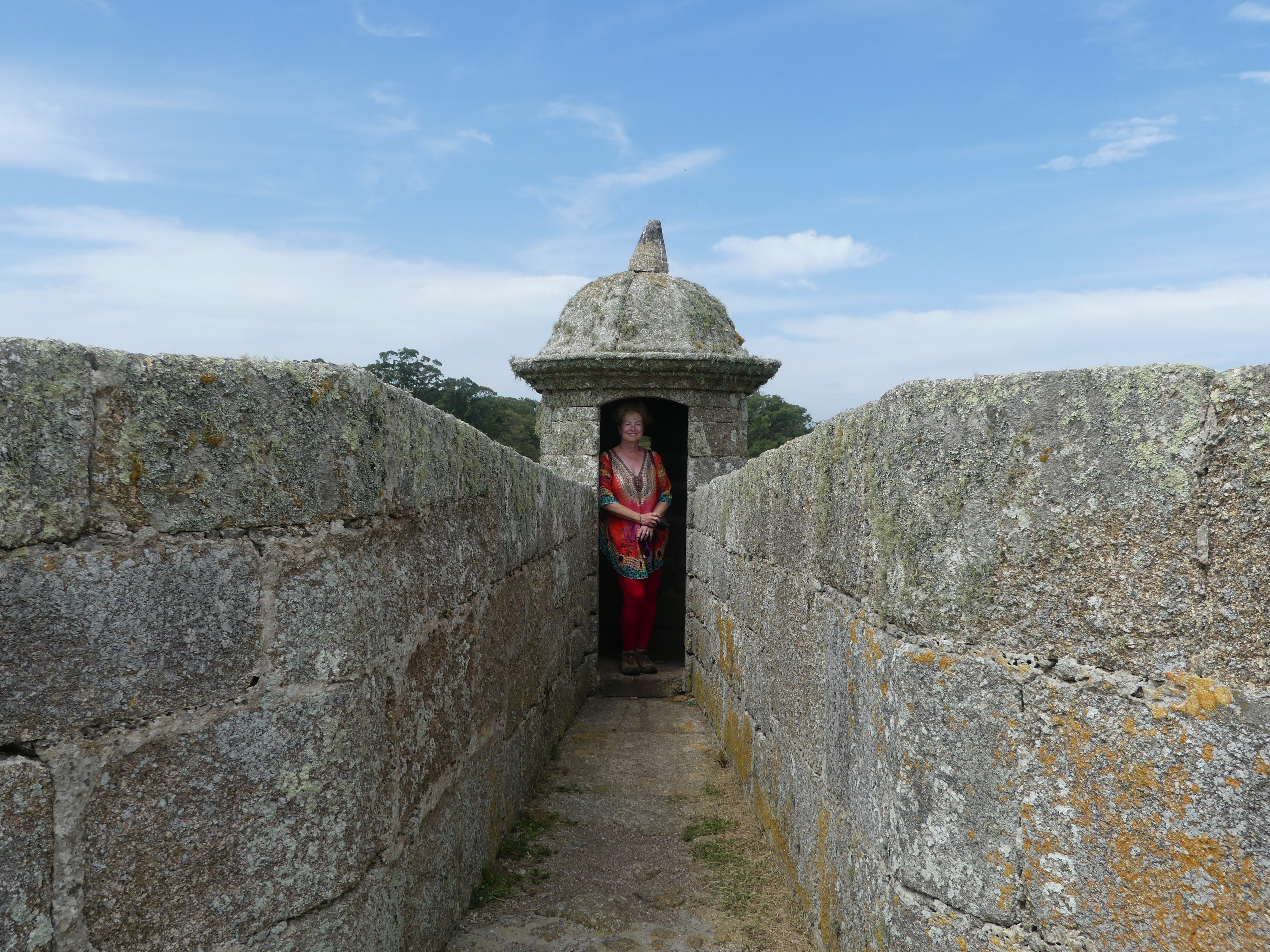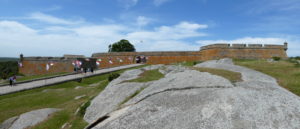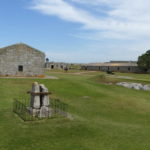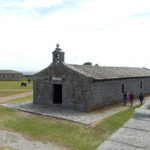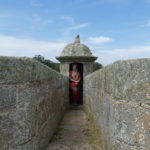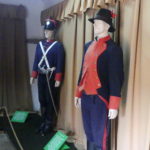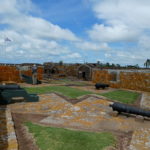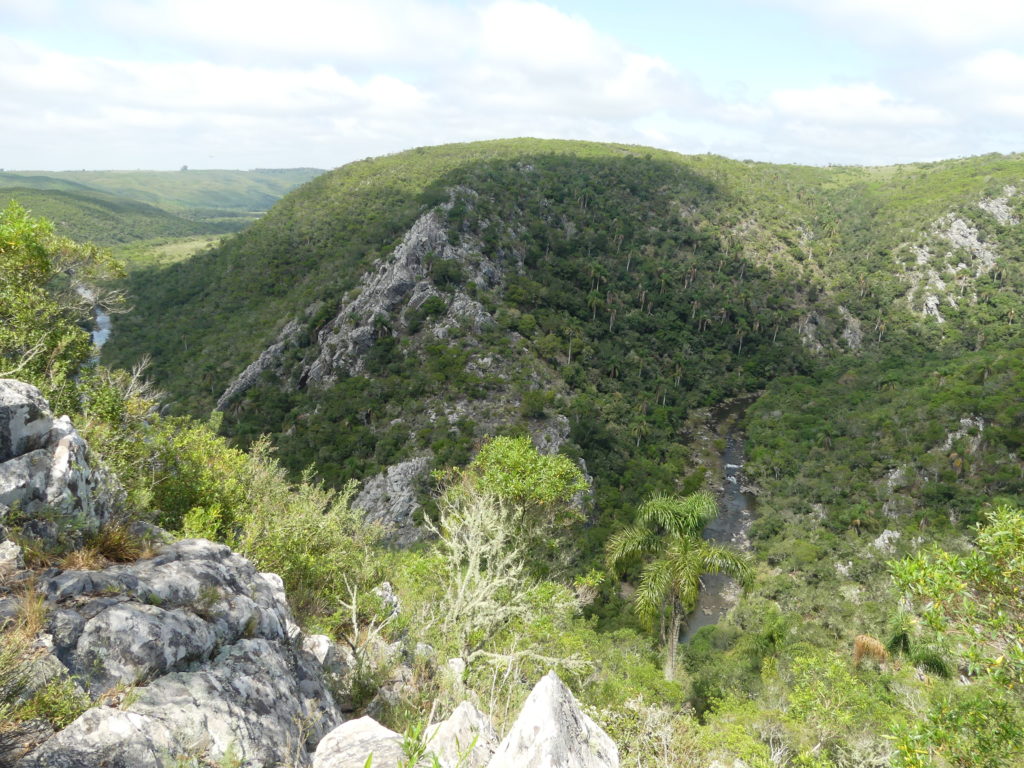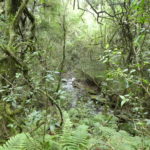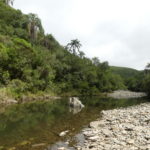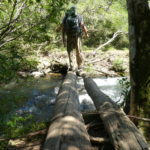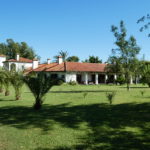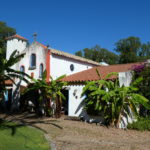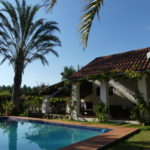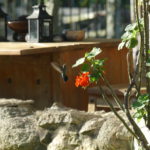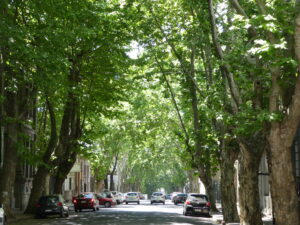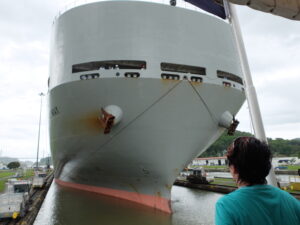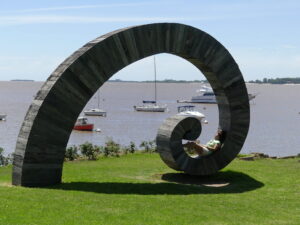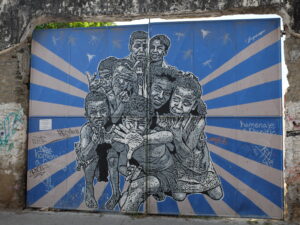FORTINS AND FORTALEZAS
Two forts from the 18th century, both named for saints (Teresa and Michael/Miguel), enlivened our visit to the northernmost coast of Uruguay, just shy of the Brazilian border. Both forts changed hands frequently until the early 1800s, as soldiers from Spain and Portugal contended for the area or resisted rebellious colonialists, only to end up in ruins by the time of independence from these countries. And both were restored as historical monuments in the last century.
We thought Fortaleza Santa Teresa impressively large (the walls barely fit into a photo), a pragmatic construct of bricks, but without much exciting inside.
The vast interior space of Santa Teresa
There was always a church in the courtyard for spiritual tending of the soldiers – along with the practical, such as kitchens and hospital and the storehouses for powder and ammunition.
It takes a while to meander the whole of the fort, and we occasionally idled along the ramparts while overlooking the once hotly contested, but now quite placid landscape.
The smaller Fortin San Miguel (which is nearly on the current border with Brazil) glowed with a rich orange color due to algae covering its stonework, and was full of things to see, like old military outfits – plus miniatures of long-vanished Uruguayan forts like those at Colonia and Montevideo.
View from into the courtyard from a corner of the battlements shows the compactness of San Miguel.
Some of the 18th century uniforms on display at San Miguel
Despite the historical perspective, however, we could not help but be reminded how much blood was spilled around these forts in late colonial conflicts.
RAVEN CANYON…QUEBRADA DE LOS CUERVOS
We veered away from the eastern shore of Uruguay, following the Brazilian border, to hike the Raven Canyon – Quebrada de los cuervos – near the town of Treinte y tres (or 33, for the renowned cadre of revolutionaries who fought for independence).
A confluence of two small rivers formed the deep wooded canyon, though vultures rather than ravens coasted past us on a very hot dry day. At the hike’s end, the lookout over the canyon was stunning.
Our trail passed several streams in a green paradise.
The main channel of the Raven Canyon, a quiet and cool refuge on a hot day.
This giant tegu was as big as it looks. On the way out of the quebrada, we found it placidly walking about and somewhat indifferent to us.
On a side trail, this was the bridge to cross.
We stayed nearby at an estancia, a South American ranch, one of many here and in Argentina that offer tourist accommodations.
The main building of the estancia. The owner and his parents managed the ranch as well as the hotel operation, which included several areas for relaxing in oversized chairs, a huge hall with an endless dining table (for very tasty meals to order) as well as a game room. Table tennis anyone? And all this served guests in just five rooms.
Originally this was the 18th century family chapel at our estancia. We slept upstairs in the choir loft and lounged downstairs in the nave. Through the window, we could watch sheep safely graze.
Poolside at the estancia, a wonderful area to cool down in the afternoon during a hot day. We met other guests – from Uruguay, Germany and Belgium – just by sitting there for hours.
And birds came to us by the pool, like (we think) this glittering bellied hummingbird.
(Also, for more pictures from Uruguay, CLICK HERE to view the slideshow at the end of the itinerary page.)


